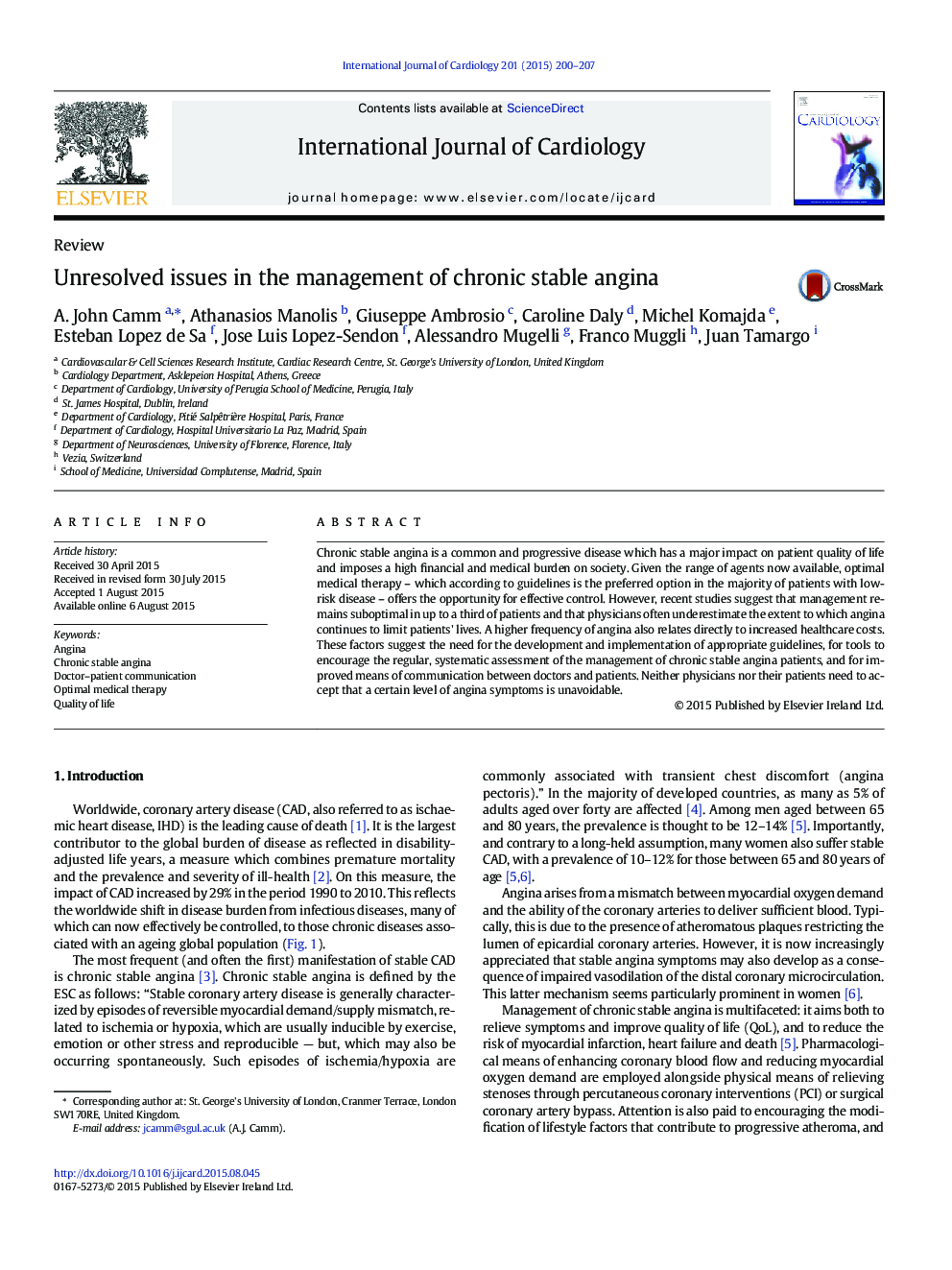| Article ID | Journal | Published Year | Pages | File Type |
|---|---|---|---|---|
| 5966277 | International Journal of Cardiology | 2015 | 8 Pages |
â¢Chronic stable angina remains a cause of significant disability and impaired QoL.â¢Patients with significant symptoms should be identified for improved management.â¢Improved disease awareness and doctor-patient dialogue are key contributing factors.â¢Recent guideline recommendations should be carefully implemented.
Chronic stable angina is a common and progressive disease which has a major impact on patient quality of life and imposes a high financial and medical burden on society. Given the range of agents now available, optimal medical therapy - which according to guidelines is the preferred option in the majority of patients with low-risk disease - offers the opportunity for effective control. However, recent studies suggest that management remains suboptimal in up to a third of patients and that physicians often underestimate the extent to which angina continues to limit patients' lives. A higher frequency of angina also relates directly to increased healthcare costs. These factors suggest the need for the development and implementation of appropriate guidelines, for tools to encourage the regular, systematic assessment of the management of chronic stable angina patients, and for improved means of communication between doctors and patients. Neither physicians nor their patients need to accept that a certain level of angina symptoms is unavoidable.
